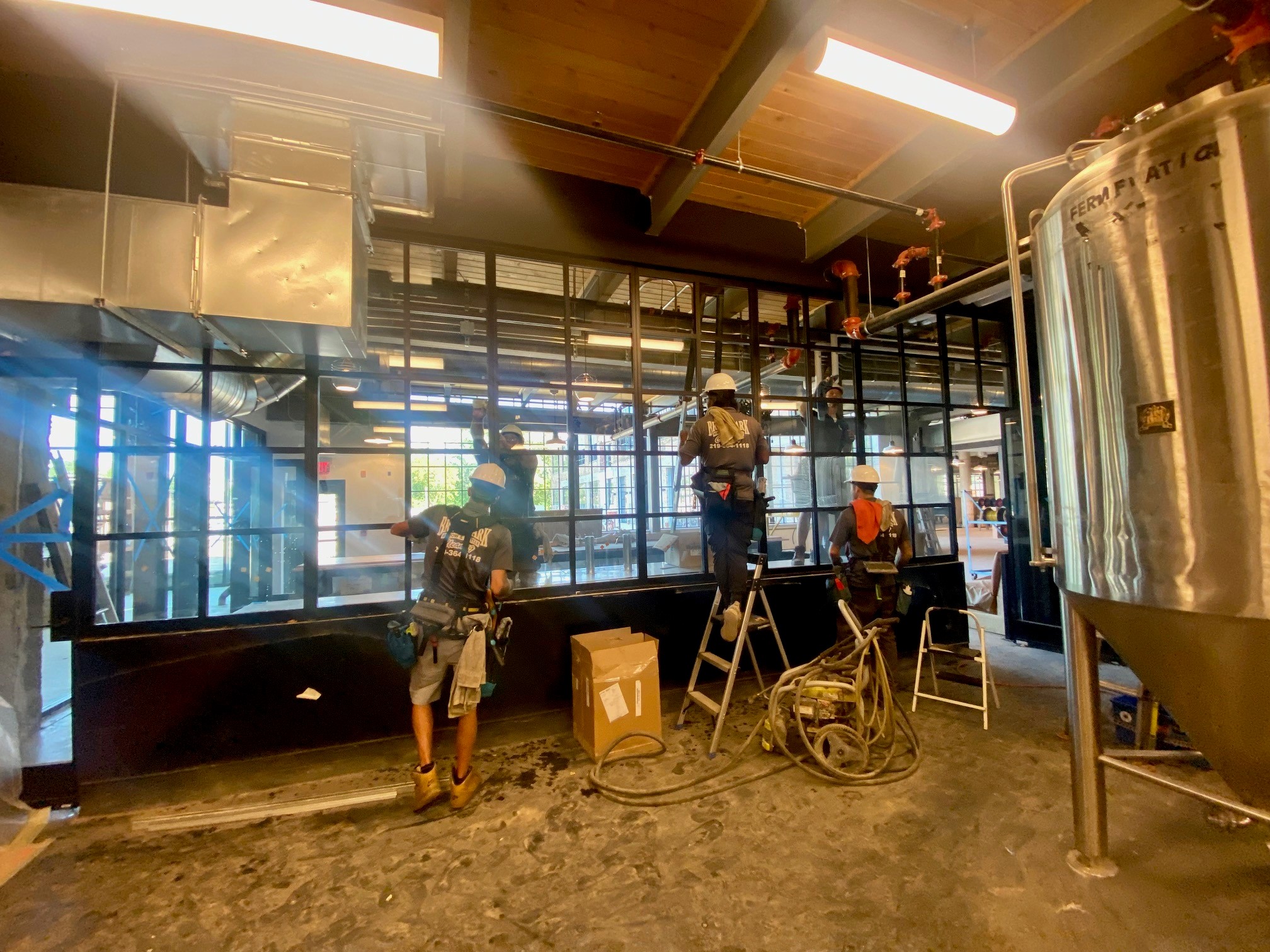Post Construction Cleaning
If you prefer ignorance over education and luck over skill, stop reading at this point.
On the other hand, if you would like to know more about glass than most window cleaners, read on.
If your current window cleaner does not inform you of the issues pertaining to heat-treated glass, you should point him in this direction.
MWCoA Tempered Glass Informational Bulletin
Construction Window Cleaning Industry
Post construction window cleaning involves some of the most difficult challenges in the window cleaning industry today. Although most builders do make an attempt to protect windows during construction, many fail to accomplish this goal, leaving the window cleaner to deal with how to best remove construction debris (plaster, paint, texture, concrete, tape, stickers) and anything else that comes into contact with the glass.
Construction window cleaners already realize this type of window cleaning is very challenging, with special training and cleaning techniques being required to safely remove construction debris from glass. This type of window cleaning often includes the use of razor blades and glass scrapers, and at times specialized soaps, chemicals and solvents.
It is well known by construction window cleaners that razor blades and glass scrapers alone will not scratch uncoated glass when properly used; the use of such tools has been the industry standard for decades. Razor blades and scrapers have been employed by not just the window cleaning industry, but are also widely used throughout the glass industry.
In recent years, as a result of contaminated or defective surfaces on some tempered and heat-strengthened glass, construction window cleaners have been exposed to new challenges and unforeseen liability in construction window cleaning. When standard construction window cleaning techniques are employed to clean the contaminated or defective surfaces on poor quality tempered or heat-strengthened glass, scratching of the glass surface can and very often does result.
Quality Control in the Glass Industry
Regular annealed glass is tempered or heat-strengthened
through a specific heating process in order to provide certain safety characteristics. Prior to the heating process, the glass is sized and belt-sanded to the desired edge finish. If the glass is not then properly washed prior to entering the tempering furnace, and if the furnace rollers upon which the glass rides are not kept clean, microscopic glass fines and chips resulting from the sizing and belt-sanding will become fused to the surface of the heat-treated glass. These small particles will then cause fine scratches on the surface of the glass when standard construction window cleaning procedures are employed.
Images of razor blade, before and after use on Defective Tempered Glass
// before and after images are missing //
Fabricating Debris Magnified
The glass washer, furnace and general fabricating plant must be kept in proper working order or poor quality products will result. This is a quality issue when fabricating heat-treated glass, not a window cleaning technique issue. Glass scratching, as a result of fabricating debris, has since become a quality, liability and client dissatisfaction issue.
Builders Education on Quality Heat-Treated Glass
Builders can help resolve this issue by requiring glass and window suppliers to provide only quality heat-treated glass to their projects that can be cleaned using industry standard window cleaning techniques. Builders should only hire qualified construction window cleaners to remove limited amounts of construction debris from their windows.
Protecting windows during construction is always good practice, but will not protect the future owner from a defective glass product when it does require the window cleaner to use a scraper sometime in the future.
Builders should also recognize the difference between fabricating debris scratches and other types of scratches caused by careless plasters, painters, texture crews and untrained workers attempting to re-move construction debris from glass. Fabricating debris scratching is only on heat-treated glass and usually very wide spread, light in nature and mostly visible with direct sunlight.
Fabricating debris is usually invisible, but can sometimes be detected by touch and the gritty sound it makes when a razor blade or scraper is lightly moved over the glass surface. Testing should be done prior to installation. You cannot always detect fabricating debris with these simple tests, but the scratching on the glass it creates is unmistakable. A magnifier can be used to aid in the identification of fabricating debris scratching, with scratches looking like a comet.
Summary and Conclusion
While it may be possible to locate fabricating debris on some heat-treated glass, window cleaners should not accept responsibility for identifying fabricating debris or its’ absence. For this reason, window cleaners should always require a liability waiver, signed by the builder, releasing the window cleaner from any liability for scratching on any tempered or heat-strengthened glass. Builders would also benefit if they required their glass and window suppliers to sign a liability waiver, prior to entering into a contract, to help ensure the builder will get the quality product he’s purchased.
For additional information:
The original documentation can be found here
www.mwcoa.com
www.StopScratchedGlass.com
www.Scratched-Glass.net
www.iwca.org
© 2018 Master Window Cleaners of America www.mwcoa.com
Images by Dan Fields; MWCoA Technical Consultant
Copyright Laws apply

